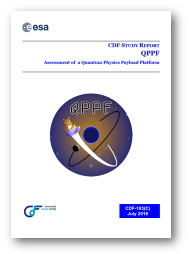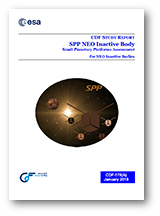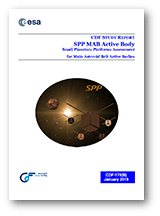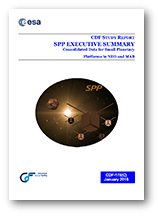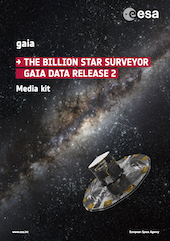ESA Science & Technology - Publication Archive
Publication archive
Publication archive
Document reference: CDF-183(C)
ESA's Concurrent Design Facility (CDF) has completed an assessment study of the Quantum Physics PlatForm: a mission concept to test the quantum superposition principle with "massive" test particles. ESA's Science Directorate requested and managed the study as one of three topics selected for investigation following the "New Science Ideas" call for proposals.
The concept studied was a proposal to perform quantum decoherence measurements with particles of more than 109 atomic mass units.
The main goal of the study was to provide a reference mission design for such a quantum physics experiment, and to inform the community of the ESA process of requirements engineering in view of future calls for missions in ESA's Science Programme.
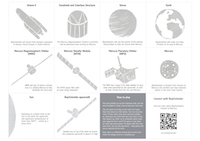 |
Test your memory and get to know the BepiColombo mission and its journey to Mercury.
Download the PDF and print it on your home computer. If you wish to print double-sided you can use the fourth page of the PDF for the back of the cards. Carefully cut out the individual cards.
Use the extra template to create a box to keep your cards safe.
How to play:
Play the game by mixing up the cards and laying them face down on a flat surface. Turn over any two cards. If they match, keep them and have another go, otherwise turn them both back over and it is the next player’s go. (Hint: try to remember which cards your opponent turns over!) The game is over when all the cards have been paired. The player with the most pairs wins. You can also play alone – keep going until you’ve matched all the cards.
ESA's Concurrent Design Facility (CDF) has completed an assessment study of Small Planetary Platforms (SPP): small mission concepts that include a mothercraft and a swarm of small satellites that can be deployed. ESA's Science Directorate requested and managed the study as one of three topics selected for investigation following the "New Science Ideas" call for proposals.
The concept studied was a proposal to perform multi-point (and possibly multi-target) measurements around small bodies (asteroids and comets), as well as Mars or Venus, to gather information from different locations simultaneously.
The main goal of the study was not to design a specific mission but to provide a "tool-box" of technical building blocks the community can use to develop these new planetary mission architectures, in reply to future science calls.
The full CDF study report consists of three main reports, each available in pdf format below:
This media kit contains background information about the Gaia mission. It has been prepared to accompany Gaia Data Release 2.
Contents:
Gaia – the billion star surveyor
Fast facts
Mapping the Galaxy with Gaia
Gaia's second data release – the Galactic census takes shape
Caveats and future releases
Science with Gaia's new data
Science highlights from Gaia's first data release
Making sense of it all – the role of the Gaia Data Processing and Analysis Consortium
Where is Gaia and why do we need to know?
From ancient star maps to precision astrometry
Appendices: Resources, Information about the press event, Media contacts
File updated 24 April 2018, to correct typo.
To download the pdf file click on the image or on the link to publication below.
DOI: https://doi.org/10.1103/PhysRevLett.120.061101
Published by the American Physical Society under the terms of the Creative Commons Attribution 4.0 International license. Further distribution of this work must maintain attribution to the author(s) and the published article's title, journal citation, and DOI.

